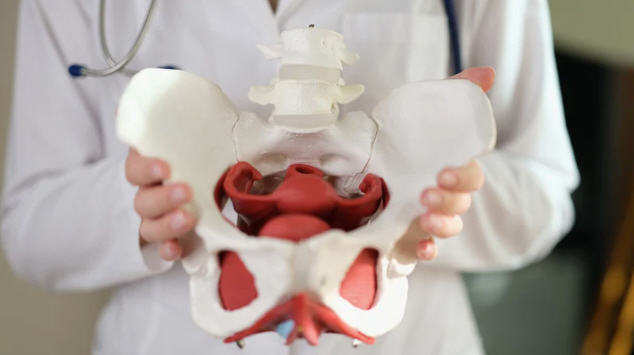


If you’ve been married for years and vaginal penetration remains difficult or impossible due to vaginismus, know that you’re not alone! There are effective vaginismus treatment options available that can pave the way for a fulfilling sexual relationship with your partner.
Vaginismus is a condition where involuntary muscle spasms prevent vaginal penetration, often resulting in discomfort or pain. It’s crucial to understand that this reaction is beyond your control, but it is manageable with the right support and treatments.
However, vaginismus treatment is very much possible, and we’re going to share with you the best methods to overcome vaginismus causes and be able to have a pleasurable and comfortable sex life.
Whether you have primary vaginismus, which means you’ve never been able to have intercourse, or secondary vaginismus that developed later in life after years of pleasurable intercourse, vaginismus can be treated—and here’s how:

It is important to understand the condition and its causes in order to treat it. Psychosexual therapy helps you explore and change your feelings about your body and eventually helps you overcome fears and everything that’s preventing you from having a healthy sexual life.
Psychosexual therapy based on Cognitive Behavioral Therapy (CBT) for vaginismus focuses on easing anxiety and gradually introducing sexual activities in a non-threatening way. It starts with relaxation techniques such as deep breathing and mindfulness to help reduce the physical tension that contributes to vaginismus.
Then, through graded exposure, the therapy gently guides you through a series of small, manageable steps toward intimacy (from finger/vaginal trainer insertion alone to insertions with the partner), allowing you to become more comfortable with penetration at your own pace.
This approach aims to transform intimacy into a positive and enjoyable experience by minimizing anxiety and increasing comfort and control.

Physiotherapy for vaginismus adopts a comprehensive approach, focusing on pelvic floor relaxation and control. It begins with an in-depth assessment and education about pelvic anatomy.
Techniques such as breathing exercises, progressive muscle relaxation, and sometimes gentle manual therapy help ease muscle tension. Graduated dilator therapy is often employed to gradually acclimate the body to penetration, alongside biofeedback to improve awareness and control of pelvic floor muscles.
The regimen may also include general pelvic strengthening and stretching exercises, with personalized pain management strategies to support a comfortable and positive path toward overcoming vaginismus.

Self-help therapy for vaginismus emphasizes gentle, progressive techniques to ease the condition, starting with relaxation methods such as deep breathing and progressive muscle relaxation to alleviate tension in the pelvic area.
Pelvic floor vaginismus treatment exercises are integral, focusing on the ability to relax and control these muscles rather than just tightening them.
Gradual finger insertion, followed by the use of vaginal trainers, allows for a controlled and comfortable adaptation to penetration. These dilators, used in ascending sizes at a self-paced, comfortable progression, help desensitize the vaginal muscles, making penetration less daunting and more manageable over time.
While not all painful intercourse is indicative of vaginismus, a key sign is experiencing pain during penetration, leading to difficulty or inability to engage in vaginal sex.
You are most likely to have vaginismus if:
If these experiences resonate with you, it’s important to consult a healthcare professional. There’s no need to hesitate in scheduling an appointment. Your doctor will discuss your symptoms causes and may perform an examination to better understand your condition.
Remember, there are effective treatments available, and with the right support, you can overcome this challenge. Don’t lose hope.

Vaginismus can be a significant source of physical and emotional distress, challenging even the strongest of relationships and, in some cases, leading couples to the brink of separation.
However, it’s crucial to remember that solutions exist for every challenge. Vaginismus is manageable with the right approach and support.
Don’t hesitate to seek assistance. Whether through psychosexual therapy, physiotherapy, or self-help methods, options are available.
Explore treatments that resonate with you, and consider our program for guided self-help therapy. You have the power to choose your path to recovery and reclaim the joy and intimacy in your relationship.
Facing pain or anxiety around sex? Our Vaginismus Program is designed to support you with tools and expert care to heal, thrive, and love without fear.



Subscribe to our newsletter to make sure you
don’t miss our updates and new programs.
Reach out for more info or if you’re an expert
and want to join the Metle Metlik team.
Enter your email address